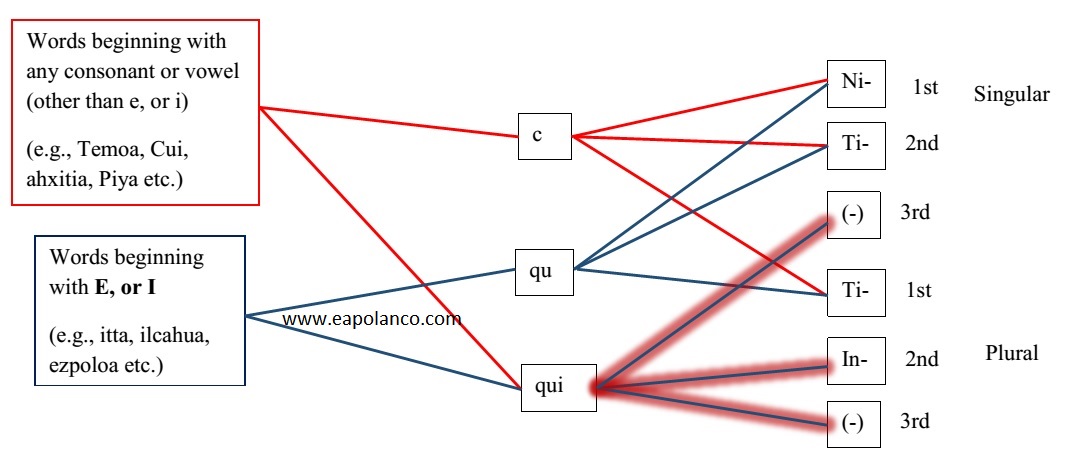In the Nahuatl language (like others) transitive verbs require and object. In this section we will be studying the usage of the nonspecific objects. In Nahuatl, we have three options C, QU, QUI. They are located right after the subjective prefix, like niquitta (ni-qu-itta), I see it. Consider the following examples:
C, qu, qui
Niquitta
Ni-qu-itta motzonteco
I it see your head (I see [it] your head)
Niccui
Ni-c-cui notomi
I it grab my money (I grab [it] my money)
I have devised a simple tool to help you memorize when to use c, qu, or qui, I call it NI-TI-TI. Whenever a verb begins with a letter that is not an e or an i, the ni-ti-ti permutations of the verb will require a c. When the verb begins with any other letter (consonant or vowel), the ni-ti-ti permutations of the verb will be qu. The qui will always be used in the 2nd pl. and 3rd person s. and pl. for all verbs irrespective of what the first letter is. (See chart at bottom)
You should notice that transitive verbs that begin with an e or i will never use c in its permutations. Words that do not begin with e or i, will never use qu.
Here are three examples:
Itta: to see something or someone
Singular
Niquitta
Tiquitta
Quiitta
Plural
Tiquittah
Inquiittah
Quiittah
Ezpoloa: to smear blood on something or someone
Singular
Niquezpoloa
Tiquezpoloa
Quiezpoloa
Plural
Tiquezpoloah
Inquiezpoloah
Quiezpoloah
Piya: to have
Singular
Nicpiya
Ticpiya
Quipiya
Plural
Ticpiyah
Inquipiyah
Quipiyah
Consider the following “Ni-Ti-Ti chart” when thinking about whether you should use a c, qu, or qui.
